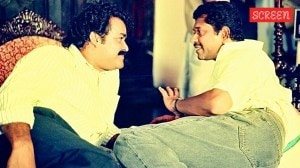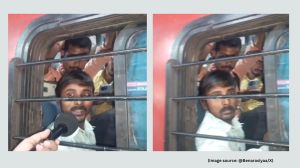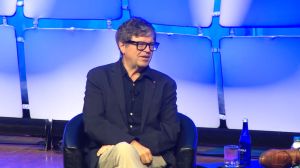In Bihar’s heart of darkness, PM, Rabri skip the last 15 yrs
It’s winter but by 11 am, it was already scorching when the sound of helicopters filled the air. Though much of Patel Maidan was still ...

It’s winter but by 11 am, it was already scorching when the sound of helicopters filled the air. Though much of Patel Maidan was still empty, it was time for Prime Minister Manmohan Singh’s first touchdown in Saharsa, his first in the entire Kosi region, and the first time he was joining a Bihar Assembly campaign as Prime Minister.
‘‘Please come in,’’ the organisers pleaded on loudspeakers. ‘‘Please settle down in your seats, all gates are open…’’ But it was in vain. This again was a first for Saharsa. Patel Maidan has traditionally played proud host to rally crowds of upto 50,000 and more.
But the crowds didn’t come today. Those who did trickle in were evidently spellbound only at the end when the four helicopters lifted off, one by one.
Both Rabri Devi’s and the PM’s speeches were remarkable for the same reticence.
Not once did Rabri indicate she had been the chief minister for the last many years. She spoke of the Bihar government in the distant third person, repeatedly heaping blame on the division of the state and an unfriendly Centre. Now that Manmohan Singh is ‘‘Bharat ke mukhiya’’, everything will be alright, she said. With Soniaji, he will do everything that needs to be done.
Manmohan Singh too neatly absented from his address the Laloo-Rabri government that ruled Bihar for 15 years. Vote for candidates of Secular Democratic Front, he urged, because Bihar needs a ‘‘new’’ government that can work with the UPA at the Centre.
‘‘Bihar needs the blessings of science and technology, and electricity and the Employment Guarantee Scheme and agro-industry and health care.’’ Bihar has fallen behind. The only time the PM acknowledged Laloo Yadav’s record was when he spoke of him as an ‘‘exemplary’’ Railway Minister. Basically, the PM’s message was the same as Rabri Devi’s: Let’s not dwell on the last 15 years, Bihar needs a Centre-friendly government now.
But why did Saharsa seem so inattentive to the visiting leaders today? It could be because Rabri Devi and Manmohan Singh aren’t seductive campaigners. Or because it is the final day of Chhat, Bihar’s biggest festival, when men and women, mostly women, are too preoccupied with fasting and ritual prayer to spare time for much else. It could be election fatigue. Or because visiting campaigners have rarely been known to engage with the issues that matter most.
Saharsa is part of the Kosi belt, famous for being the Yadav-Muslim heartland. It is also a terribly backward region. If the drop-out rate is 45 per cent in Bihar, it is 48 per cent in Saharsa. If 55 per cent children are out of school in the state, the number is 58 per cent in Saharsa. And if 35 per cent of them are forced to leave the state as bonded labour, 38 per cent migrate from Saharsa alone.
‘‘Go to the nearly 400 villages that lie between the two embankments of the Kosi river that get annually devastated by the floods’’ advises local activist Ghuran Mahto, ‘‘and you will not find a single able-bodied man around’’. They have all migrated to other states.
‘‘No teacher goes into the embankment areas, there is no road there and the few primary health care centres that remain standing have no doctors, medicines, compounders or nurses.’’
Life is not much better outside the embankment areas. Local residents tell you about how there has been no attempt to build agro-industry that could have provided large-scale employment here. The last was the Baijnathpur paper mill, under construction since 1979, abandoned now. Then there are the problems this belt shares with the rest of Bihar: poor or no roads, no electricity, a general abdication by government. And the bahubali and the dabang rushing in to fill the space.
Any and every roadside discussion in and around Saharsa on the prospects of different parties in these elections veers around to Pappu Yadav. According to one narrative, Laloo will do well this time in the Kosi belt because this time Pappu Yadav has ‘‘masterminded’’ the distribution of tickets, from his New Delhi jail. The contests in this Yadav belt will not be as messy as they were last time when Pappu Yadav worked to defeat Laloo’s candidates.
The other version of the story also keeps Pappu at the centre but concludes that Laloo will lose because Pappu Yadav has not been able to clean up the explosion of dissension and ambitions within the Yadav ranks.
But one thing is certain. The helicopters that lifted off from Patel Maidan today must have carried a slightly subdued set back home.
They must be hoping that the empty spaces in the maidan are not an omen in the run-up to the third phase of polling. Having done none too well in the first two phases according to most exit polls, Laloo’s RJD desperately needs to work up enthusiasms again in its erstwhile traditional bastions in the Kosi belt.
In the last elections, only two seats out of the 14 that fall in this region voted for the RJD. A similar result this time could mean trouble, big trouble.





- 01
- 02
- 03
- 04
- 05


























